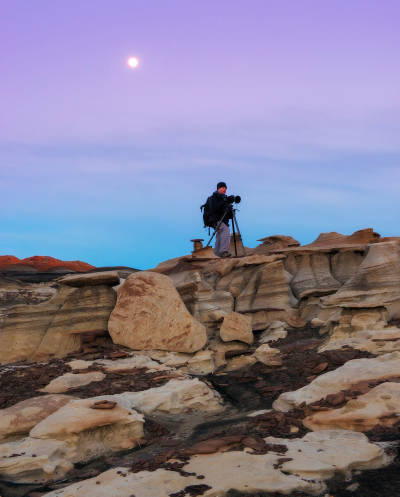Destination Namibia. Traveling some 16,000 miles one-way, with over 50 lbs of camera gear, I was unprepared for the richness of colors, expanse of open land and, at certain times, outright alien experiences that Namibia put in front of me. The first stop on the itinerary was Etosha National Park, which is a large game preserve in the northeast corner of Namibia. Elephants, zebras, giraffes, oryx, springbok and the majestic lion.
My friend Justin, who has toured many folks through Namibia over the years, told us that lion sightings were a bit rare away from the watering holes during their winters. Murphy’s Law took hold, and the first night’s drive into the park was held up by a traffic jam around the seven lions relaxing by the side of the road. Not having our high-end gear handy, we all took out our iPhones and gestured away.

iPhone 6+, PicMonkey edit
The following day we were lucky enough to spot a lion out in the park, and after giving Justin another quirky look, we pulled out our 600mm lenses and filled our memory cards. I’d been questioning the merits of lugging big lenses around the world and back, but the extra length and the wonderful bokeh and sharpness really made a difference. Suddenly the long slog of all that equipment had become worth it.

Nikon D810, Nikkor 600mm f4
Seeing animals in their natural habitat, being immersed in the ecology and looking them directly in the eyes evokes a tremendous connection and kinship that is difficult to describe.

Nikon D810, Nikkor 600mm f4
An aerial view of one of the iconic dunes in Namibia. At the tip of the foreground dune you can see trees, and if you look closely, the white specks are some people climbing the dune along its spine. The more reddish color indicates an older dune than the more traditional whitish-yellow dunes closer to the ocean to the west (see below for more info).
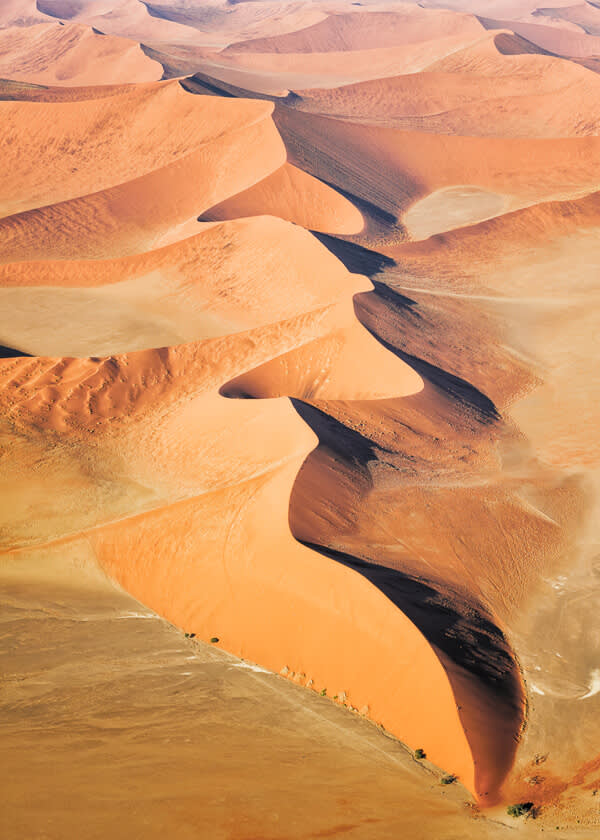
Nikon D810, Nikkor 28-70mm f2.8
The oryx is the national animal of Namibia. The first daylight on the savannah had all kinds of activity, mostly grazing. Unlike the jackals, the oryx didn’t seem intimidated by any of the animals except the elephants at the watering holes.
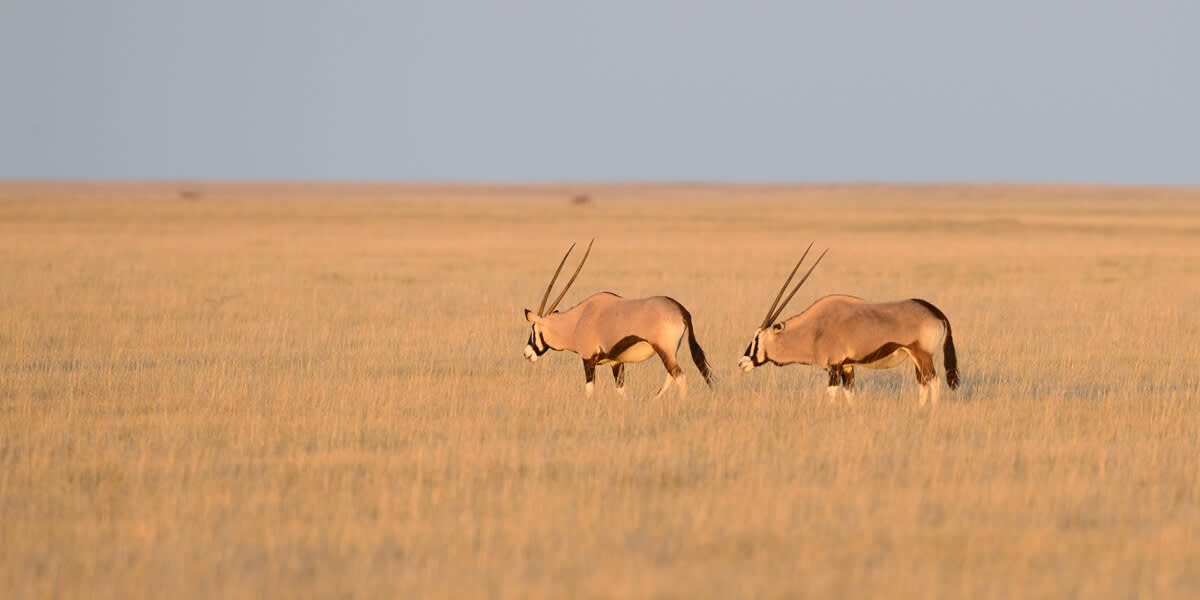
Nikon D810, Nikkor 600mm f4
Oh, and they have big bugs.
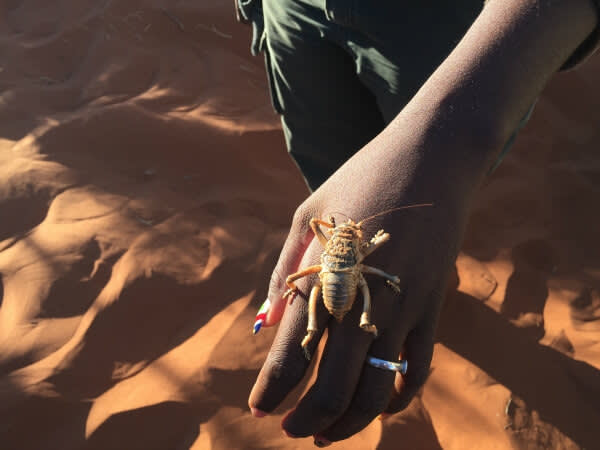
iPhone, PicMonkey edit
A strange shrub formation exists on the plains of the Namib desert, appearing as numerous circles of grass and still confounding experts as to their origin. Theories of their origin range from underground termite colonies to chemical compounds in the soil to wind spirits playing tricks on gullible humans. In any event, these so called “fairy circles” provide a great repeating pattern composition when photographed from a helicopter with its doors removed for better freedom of movement. Lens selection was key because you can’t be changing lenses when the horizon is jumbling about and a 40 knot wind is whipping through the cabin.

Nikon D810, Nikkor 28-70mm f2.8
We also took a helicopter ride over fairy circles and the plains of the NamibRand reserve. The zebras and oryx were curious about the whirly thing in the sky, but ultimately we ran out of gas, and they didn’t. This an aerial shot mixed with clouds from a different day/place for an abstract of the Namibian plains, theoretically formed eons ago through the separation of the South American continent from Pangea.

Nikon D810, Nikkor 24-70mm f2.8, 2 shot exposure blend
One of the iconic dunes in the Sossusvlei area of Namibia. The intense red colors of the dunes are caused by a high percentage of iron in the sand and oxidation. The oldest dunes are those of a more intense reddish color like this one. The dunes are the second highest in the world (higher ones in China), and stretch to the Atlantic ocean west, north across the Skeleton Coast and south into South Africa for a good 1200 miles.

Nikon D810, Nikkor 600mm f4
In the midst of the sand dunes in Namibia lie some dried up ponds that have hardened and trapped the trees that used to grow there. Frans Lanting, a fellow Dutchman, made the Deadvlei salt pan famous with a shot for National Geographic a number of years ago, and it was my aspiration to see this alien landscape and try my own interpretation. What you are seeing is a pan of hardened sand and trees solidified against the backdrop of a sand dune with afternoon light. When I first saw Frans’ shot I thought it was a painting or something from Mars.

Nikon D810, Nikkor 80-400mm
One of the things I’ve always wanted to see was the Southern Cross, which was visible almost every night as we were south of the Tropic of Capricorn. One of the evenings we gained special permission to stay after sunset on Deadvlei (see above), and we were witness to the clearest skies you can imagine. This is a 2-shot exposure blend (one for the sky, one for the dunes and the salt pan).
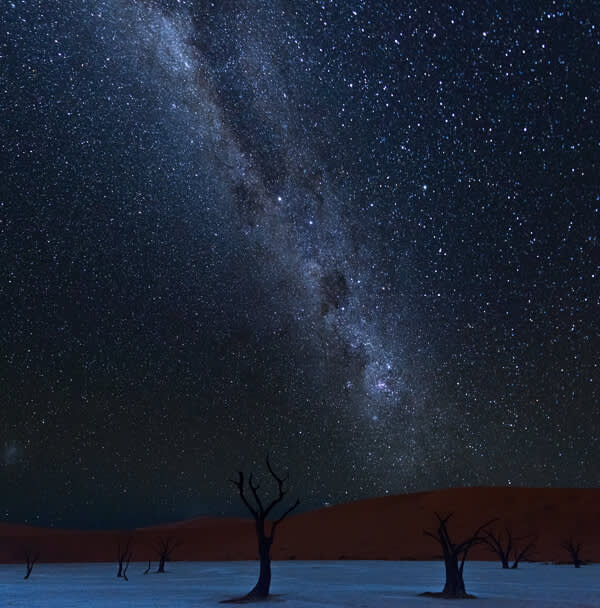
Nikon D810, Nikkor 14-24, 2-shot exposure blend
In the next blog installment, I’ll show some pictures from Kolmanskop, an abandoned diamond mining town, and one of the most surreal photo destinations in the world.
